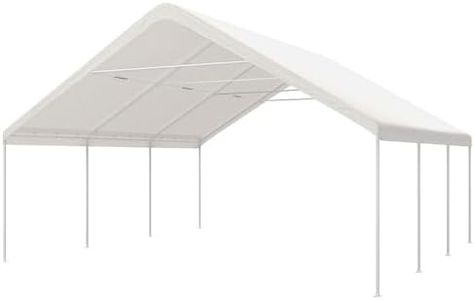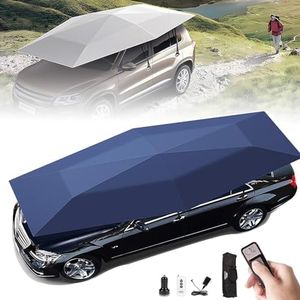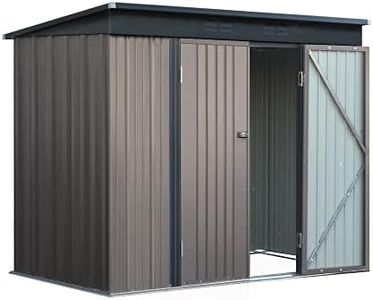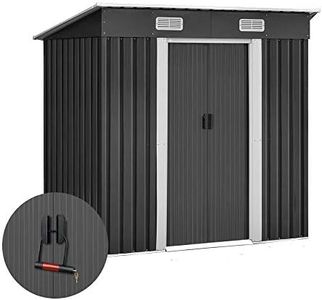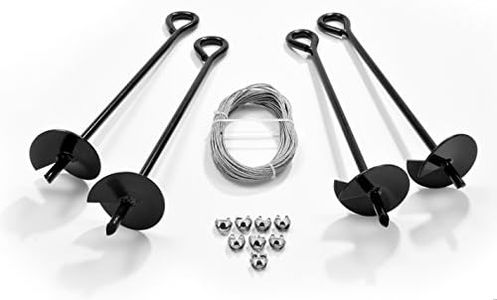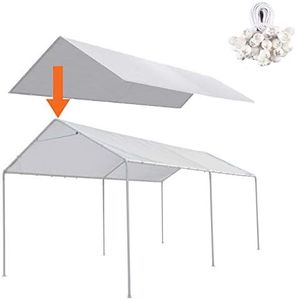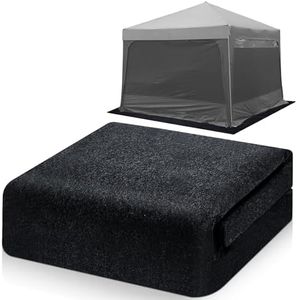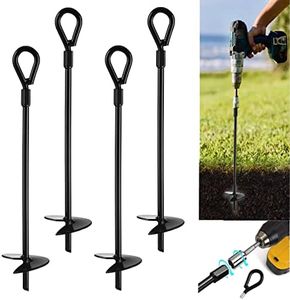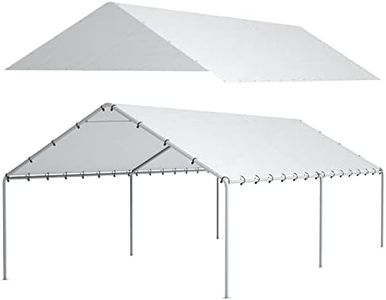We Use CookiesWe use cookies to enhance the security, performance,
functionality and for analytical and promotional activities. By continuing to browse this site you
are agreeing to our privacy policy
10 Best carports
From leading brands and best sellers available on the web.By clicking on a link to a third party's website, log data is shared with that third party.
Buying Guide for the Best carports
Choosing the right carport is all about understanding your needs and the place where you'll put it. Carports provide shelter for your vehicle, and protect it from sun, rain, snow, and debris. To pick one that suits you, think about how many vehicles you need to cover, the climate in your area, how much space you have, and if you want something permanent or temporary. By considering these factors, you'll be able to select a carport that keeps your vehicle safe and fits your property.MaterialThe material of the carport determines its durability, maintenance needs, and appearance. Common carport materials include steel, aluminum, and wood. Steel is strong and offers good protection, making it ideal for harsher climates, but it’s heavier. Aluminum is lighter and resists rust, so it works well in areas with a lot of rain. Wood can look attractive but needs regular care to prevent rot and insect damage. When choosing, think about your local weather and how much effort you want to spend on upkeep.
Size and CapacitySize refers to the overall dimensions of the carport and how many vehicles it can shield. Single carports are made for one vehicle, while double or triple models can cover two or more. Height matters too, especially if you have a tall vehicle like an SUV or camper. Before choosing, measure your parking area and consider the types of vehicles you want to store. It's smart to choose a size that covers your current needs with a little extra space for easy access and storage.
Roof StyleThe roof of a carport can be flat, gabled, or curved. Each shape affects how well the carport sheds rain and snow and how it looks alongside your home. Flat roofs are simple but might not drain as quickly. Gabled (A-frame) roofs handle water and snow better and can look more like part of a house. Curved roofs are modern and help with runoff. Select a style that suits your home’s look and your area’s weather patterns for best results.
Anchoring and InstallationHow the carport attaches to the ground is important for stability. Some carports are free-standing, while others are attached to a building. There are different ways to anchor: some use bolts into concrete, while others have stakes for softer ground. Consider your local winds and weather when choosing an anchoring method. If you want to move the carport later, look for less permanent options. If you’re in an area with storms or heavy winds, sturdy anchors are a must.
Permanence (Temporary vs. Permanent)Carports can be designed as temporary structures or as permanent additions to your property. Temporary carports are easier to set up, move, or take down, which is helpful if you might relocate or just need shelter for part of the year. Permanent options are more stable and long-lasting but require more work to install and sometimes need permits. Your choice depends on how long you expect to use the carport in the same spot and local regulations.
Ventilation and Side PanelsWhile most carports are open on the sides, some have optional panels or partial walls for added protection. Sliding panels or roll-down sides can protect against wind, sideways rain, or flying debris. Ventilation is also important to let air flow and avoid moisture buildup. If you live in a very windy or wet area, or want extra privacy or security, consider a carport with side panels or covers.

